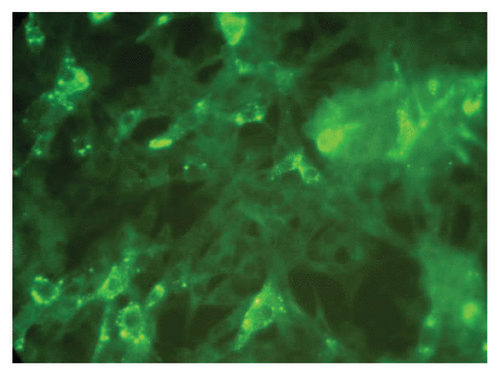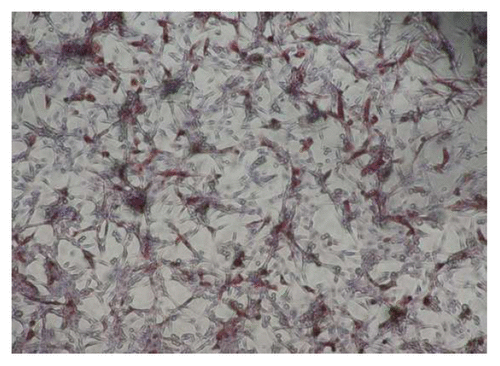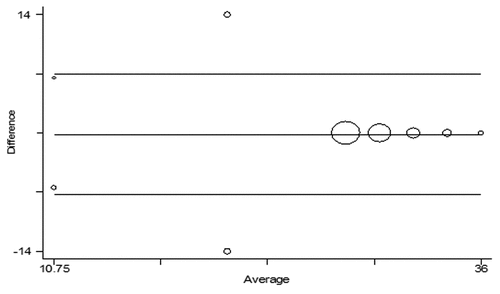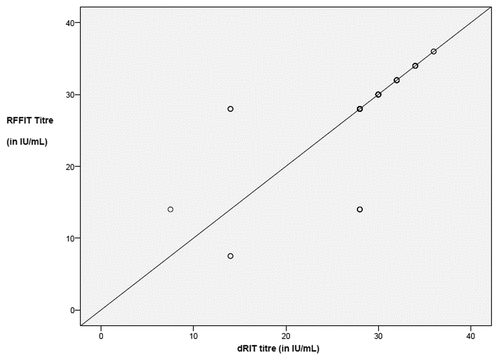Figures & data
Figure 1. Showing the 50% end point dilution in the Rapid Fluorescent Focus Inhibition Test. Note approximately 50% BHK 21 cells in the microscopic field are infected as evidenced by presence of fluorescent foci representing rabies nucleoprotein (×400).

Figure 2. Showing 50% end point dilution in the immunohistochemistry based test. Note the presence of dark brown inclusions representing rabies nucleoprotein in approximately 50% of BHK 21 cells (×400).

Table 1. Results for repeatability/intra-assay precision
Figure 3. Bland Atman plot showing the agreement between the 2 tests. Please see section “results” for explanation.

Figure 4. Scatter plot graph of results obtained between the 2 tests. Note the good correlation among samples with high titers (>20 IU/mL). There was no correlation with samples having titer less than 20 IU/mL.

